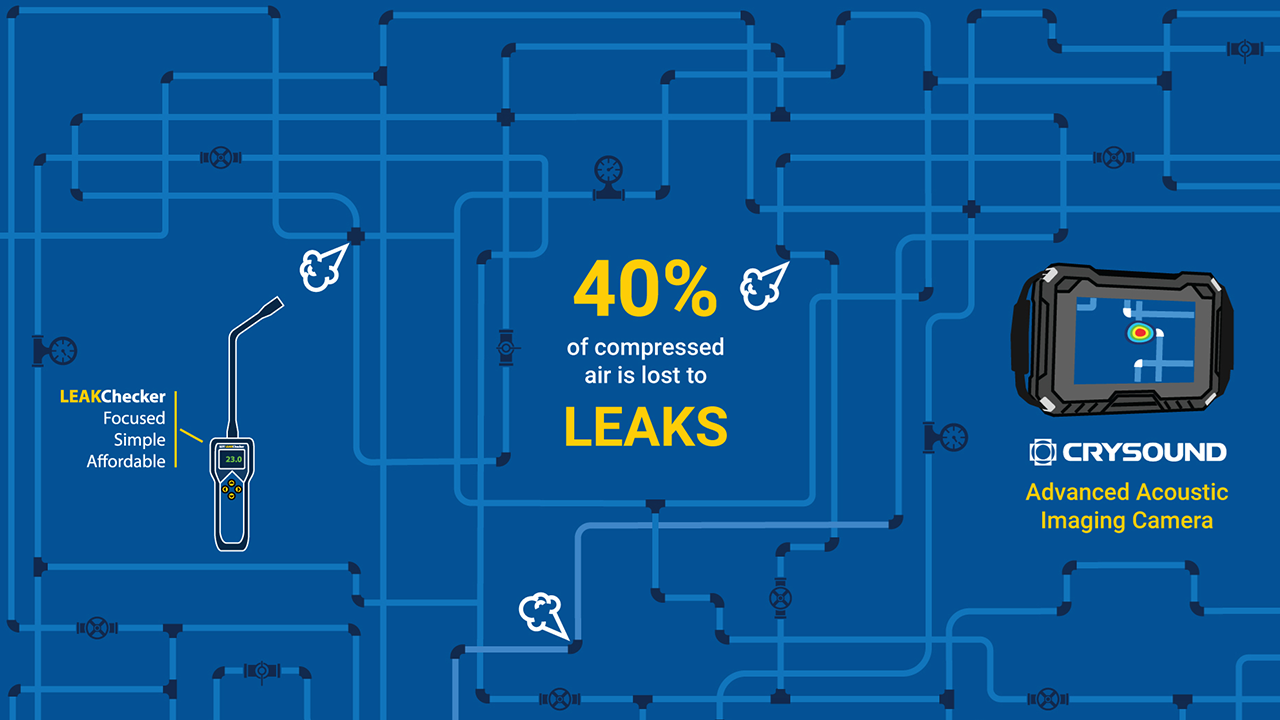When most companies hear the word “training,” they think of cost: time off the floor, travel expenses, registration fees. But what if training wasn’t a cost… but an investment, one with real, measurable returns?
SDT’s Level 1 Certification is a way to generate value for your maintenance program from day one. From energy savings to improved safety, reduced downtime, and optimized performance, the benefits are real and they add up fast.
Cut compressed air losses and cut costs
One of the fastest and most tangible returns from this training is in leak detection.
Compressed air systems are notorious for inefficiency. Studies show that up to 40% of compressed air is lost to leaks, often silently draining resources without detection. That’s thousands of euros a year, literally disappearing into thin air.

The Level 1 course teaches inspectors how to locate even the smallest leaks with precision, in any type of industrial environment. And thanks to SDT’s included leak quantification methodology, inspectors can even assign a monetary value to the leaks they find, helping you prioritize and justify repairs with data, not guesswork.
Imagine finding €10,000 worth of leaks in a single day. Many of our trainees do just that, often within the first week after certification.
See trouble coming and avoid it early
Beyond energy, ultrasound helps prevent unexpected failures in mechanical and electrical systems.
Bearings, for instance, begin to emit telltale signs of failure long before vibration analysis or temperature checks show anything unusual. Steam traps can pass live steam for months undetected unless you know what to listen for. And electrical discharge events, such as corona, tracking, and arcing, have distinct ultrasonic signatures that are often missed until it’s too late.
The Level 1 course trains inspectors to detect these subtle changes early, providing the critical lead time needed to schedule repairs, order parts, and avoid catastrophic breakdowns.
Protect your people
Safety is another area where the ROI is immeasurable, until something goes wrong.
High-voltage electrical inspections are dangerous if not handled correctly. But the beauty of ultrasound is that it’s non-contact. From a safe distance, inspectors can listen for signs of trouble inside switchgear, control panels, or transformers, without removing covers or putting themselves at risk.
The training emphasizes not just the how, but the why and when of inspection. It teaches safe practices and situational awareness, helping to embed a safety-first culture across your maintenance team.
Because protecting your assets starts with protecting your people.
Improve your lubrication program
Most bearings fail not because they’re bad, but because they’re poorly lubricated. Over-lubrication is just as dangerous as under-lubrication. SDT’s Level 1 training introduces students to sound-guided lubrication: a smarter, evidence-based way to apply grease only when and only where it’s truly needed.



